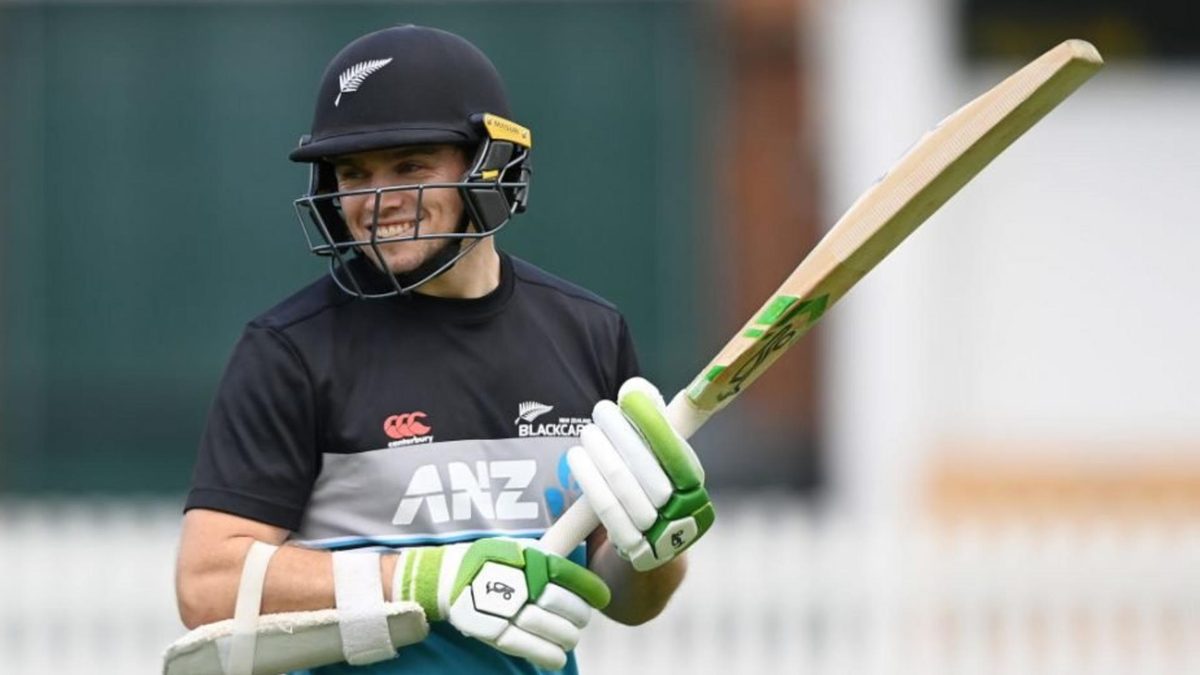
Aadya Sharma on Tom Latham, the New Zealand opener who will be key to his country’s chances of securing another series win in England.
Tom Latham sits in his hotel room, peering into the camera for our video call. As I ask the first question, he slowly fidgets with the frame, adjusting it so that it shows his face better. He listens intently, waits patiently for each sentence to end and is in no hurry of any sort. A dry smirk is as adventurous as he gets with his expressions. The response is invariably preceded by a moment’s pause as he sizes up the question. Then he fluently puts his thoughts across.
The process is not unlike his style of red-ball batting. Measured, carefully crafted, gentle yet fluent, undoubtedly effective. Latham does it without being hurried by the world around him. Over the years, his consistency has turned him into one of Test cricket’s best openers. Since the start of 2017, only Dimuth Karunaratne and Dean Elgar have hit more Test runs than him opening the batting. Of the 10 openers with the most runs in that period, only Kraigg Brathwaite and Rory Burns have struck their runs at a slower rate, highlighting Latham’s watchfulness. No other New Zealand opener has hit more than his 12 Test hundreds. Only John Wright has more runs in that role for the Black Caps, and he averaged less. At 30, Latham can already lay claim to being a New Zealand great.
“An opener in Test cricket is sometimes going to be a tough job, but on the other hand, it’s sometimes the best place to bat in the world,” Latham told Wisden.com back in March. “It’s important that you don’t get too high, you don’t stay too low. It’s trying to be mentally level as much as possible.”
He is “never satisfied” from a technical standpoint, but his mental strength is clear to see. When he made his Test debut in February 2014, New Zealand – under the leadership of Brendon McCullum – were still finding their way as a Test side. Openers came in fast and went out faster. From 2000 until his debut, New Zealand employed 22 different batters at the top of the order. Latham, though, has managed to stick around: after batting at four on debut, Latham has opened in his subsequent 63 Tests.
He may take things slow, but there’s still plenty to enjoy from an aesthetic sense: like Sangakkara, there’s that late tap of the bat before the ball is delivered; the drives come out early; the short ball is cracked away on both sides of the wicket; and the runs keep piling on. He has a remarkable understanding of where his off stump is, knowing what to go after and when. Against spinners, he doesn’t shy away from employing the sweep.
In English conditions, a steep challenge for visiting openers, Latham’s batting attributes will be thoroughly tested. Beginning with the first Test at Lord’s, Latham will be coming up against two brilliant new-ball bowlers in James Anderson and Stuart Broad. He still hasn’t shown his best in England; five Tests across two tours have resulted in an average of 30.33, two half-centuries and no tons. Throw in the recent retirement of Ross Taylor and the pressure is on Latham to deliver for his country, particularly as he is New Zealand’s second-highest ranked batter after Kane Williamson. “Ross retiring is going to leave a massive hole from a runs point of view, but also from a leadership point of view and experience point of view,” Latham admitted during our discussion.
What adds to Latham’s challenge is the current uncertainty around Williamson’s form. Since the start of 2020, Williamson has played only half of New Zealand’s Tests, with a recurring elbow problem causing issues over the last year. The New Zealand captain hasn’t played a Test since last year’s tour of India and enters the three-match series against England on the back of a poor IPL campaign with Sunrisers Hyderabad.
Latham’s importance to New Zealand therefore grows. In Williamson’s absence he has been forced to stand in as skipper – a task he’d done previously in ODIs – but he wasn’t his usual self with the bat while taking on that responsibility. Eight Tests as skipper saw him average 33.75, and while there was a mammoth 252 against Bangladesh earlier this year, it may be to Latham’s benefit in the short term that Williamson is back to take on the leadership.
This is an interesting period for Latham and New Zealand. They’ve put in the hard yards and had plenty of success, reaching World Cup finals and winning the World Test Championship last year. Now comes the tricky part – to stay on top. Latham will have to help New Zealand maintain their pace while he occupies the status of a veteran, one who could follow Williamson as his country’s full-time skipper.
“Growing up, all you sort of dream about is playing cricket for New Zealand,” Latham added. “[It] wasn’t necessarily a dream to captain New Zealand.” His style so far has been to follow Williamson’s methods – “It’s just a continuation of what Kane has been doing”, he admitted. In time, we may come to learn more about what Latham’s own brand of leadership represents.
Over the next few weeks, the focus should simply be about the batting. There’s a cherry-red Dukes to keep an eye on, and a record in England to rectify. Sometimes tough, sometimes the best job in the world. Latham will hope it’s the latter when he returns to Lord’s on Thursday.








